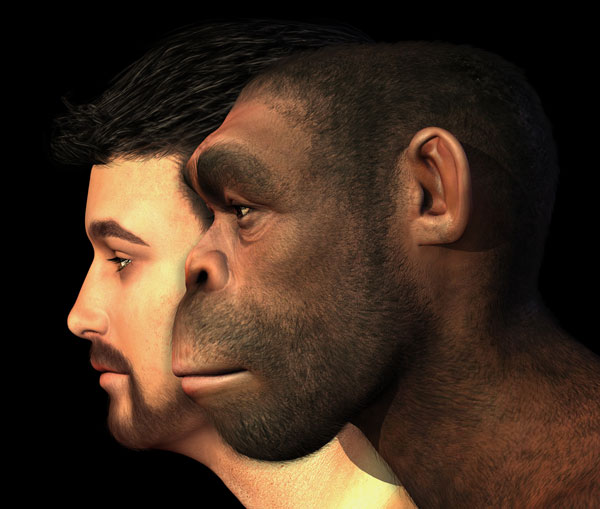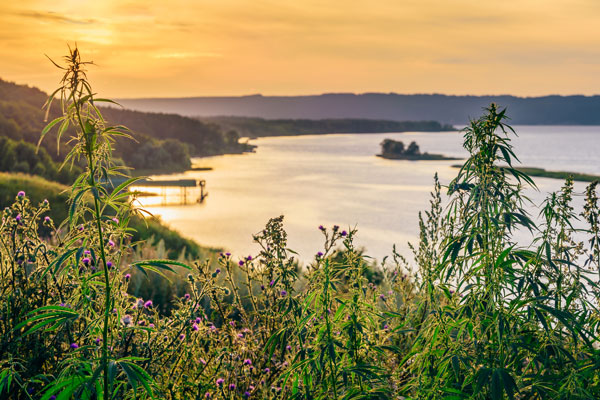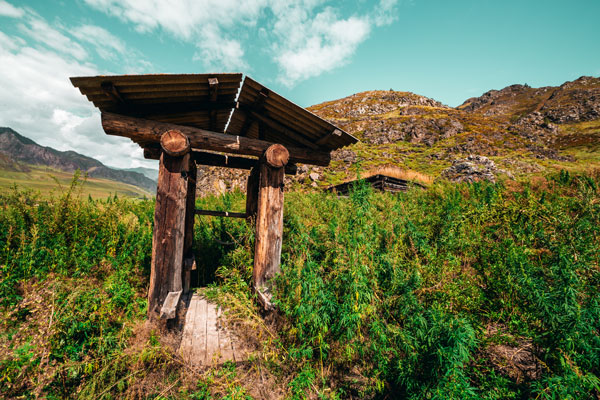The Ancient History of Cannabis
Historically, cannabis was used extensively as a foraging plant for both its nutritional and medicinal properties. Cannabis was one of the first agricultural crops domesticated by our early ancestors and evidence of cultivation can be traced back as far as 12,000 years ago.1
People have cultivated Cannabis throughout recorded history as a source of industrial fibre, seed oil, food, recreation, religious and spiritual enlightenment, and as an important healing medicine.2
Each part of the cannabis plant was harvested in a different way, depending on the intended purpose of its use.
Humans have had a symbiotic relationship with the cannabis plant for thousands upon thousands of years.
A Foraging Plant
 Early homo sapiens were hunter gatherers who depended on foraging for local plants, roots, berries and nuts for survival. Over millenia early humans developed an intimate relationship with cannabis because they recognized the nutritional value of this ancient and sacred plant.
Early homo sapiens were hunter gatherers who depended on foraging for local plants, roots, berries and nuts for survival. Over millenia early humans developed an intimate relationship with cannabis because they recognized the nutritional value of this ancient and sacred plant.
Hemp, is a non-psychoactive variety of cannabis and is an incredibly versatile plant; it can grow successfully in almost any environment.
Hemp seeds provide protein, essential amino acids, essential fatty acids and fibre; all staples for a healthy human diet.3
Hemp seeds are also a source of Vitamin E, calcium, iron, magnesium, potassium and zinc.4
Archeologists working in sites throughout Asia, Africa, Europe and the Americas have discovered evidence of prehistoric cannabis being used for agricultural, medicinal and religious purposes.
Many of these important archeological sites date back thousands of years, the oldest of which has been confirmed around 8,000 BCE.5
Items unearthed through meticulous excavations include hemp clothing, hemp fibre used in pottery and building construction, stashes of hemp seeds used for food, remains of cannabis resin and smoking implements, and caches of dried cannabis flowers.6
The Spread of Cannabis Across the World
 Cannabis is indigenous to Central and South Asia; its origins can be traced to the steppes of Southern Siberia and Mongolia, and within the valley regions that surround the Himalayan Mountains.7 Due to the nomadic nature of early humans these important seeds were carried with them during their journeys. Following the flow of human migration over countless centuries, cannabis quickly spread throughout Asia and across the ancient world.
Cannabis is indigenous to Central and South Asia; its origins can be traced to the steppes of Southern Siberia and Mongolia, and within the valley regions that surround the Himalayan Mountains.7 Due to the nomadic nature of early humans these important seeds were carried with them during their journeys. Following the flow of human migration over countless centuries, cannabis quickly spread throughout Asia and across the ancient world.
The process of human migration helped spread cannabis across the globe from Asia to Africa, Europe and the Americas.
As cannabis spread across the world throughout many different bio-climatic regions, varieties of cannabis began to develop independently from one another producing a range of different cannabis strains.
Cultural traditions surrounding the use and consumption of cannabis also developed regionally in a diverse manner.
For example, the ancient Chinese have used hemp for industrial purposes since at least 6,200 BCE and there is evidence of medicinal cannabis being used in China from around 4000 BCE,8 while the entheogenic and intoxicating properties of cannabis were introduced around 2800 BCE.9 On the opposite side of the spectrum, cannabis was used almost exclusively as an intoxicant for religious and cultural reasons in ancient India.10
A Regionalized History
 The cannabis plant we know today has a complex regionalized history due to important geographic and evolutionary factors. There were 6 regions in the ancient world where cannabis played an important part of the cultures that developed there.
The cannabis plant we know today has a complex regionalized history due to important geographic and evolutionary factors. There were 6 regions in the ancient world where cannabis played an important part of the cultures that developed there.
These 6 regions surrounded the “cradles of civilization” and were respectively:
- The Hindu Kush Region and the Indus River Valley
- The Iranian Plateau and Central Asia
- India and the Ganges River
- China
- Egypt
- Mesopotamia
All six of these regions are historically significant, being closely linked with what are considered the “cradles of civilization.” These areas of complex cultural development are where mankind’s earliest civilizations formed into highly organized societies that were characterized by advanced agriculture, religious traditions and forms of centralized government.
As we explore these regions of ancient cannabis cultivation and consumption, it will become apparent how interconnected the history of cannabis is with the cultural and religious evolution of modern man.
The Hindu Kush Region and the Indus River Valley
The earliest recorded cultural references to cannabis are found among the civilizations that developed along the Indus River flowing from the Hindu Kush and Himalayan Mountains.11 The Indus Valley Civilization was a sophisticated agricultural based civilization whose influence and culture spread for thousands of miles across South Central Asia. Cannabis was an important economic resource; it was used in agriculture, industry and religion.
As the Indus Valley Civilization spread, so too did the cannabis plant, carrying both the seeds and traditions of cannabis worship.12 The “Ancient Cannabis Road,” connected the cultures of Arabia, Mesopotamia, Egypt, Phoenicia and the Mediterranean with the powerful and influential Indus River Valley civilization.13
The Iranian Plateau and Central Asia
The civilization that developed on the Iranian Plateau was a “break-away” civilization of the same culture that created the Indus River Valley civilization. These proto-Iranians preserved many religious, linguistic and agricultural traditions of their Indus forebears, including the use and worship of the cannabis plant.14
The ancient Indo-Iranian people developed into a nomadic tribal society that was based around the domestication of horses and this equestrian culture spread across all of Central Asia from Eastern Europe and the Black Sea to Mongolia and the Gobi Desert of China.15 The successive waves of migration and conquest helped disperse both the cannabis plant and cannabis based religious worship across the massive geographic region of the Eurasian Steppes.16
India and the Ganges River
The cannabis plant has a long and sacred relationship with the cultures of ancient India; the first recorded reference to cannabis can be found in the sacred Sanskrit hymns of the Vedic Texts of Hinduism.17 Cannabis use, both religious and medicinal, was quoted in the Vedic scriptures and was considered one of the “five kingdom herbs” that were considered sacred.18
Bhang is the name for both the cannabis plant and the cannabis beverage that held an important place within the culture of ancient India and Bhang was also seen as a gift from the god Shiva.19 Consuming cannabis has been popular in India since the beginning of recorded history and was consumed as a beverage, smoked with a ceramic pipe or used during religious ceremonies as a form of intoxicating incense.20 The important role that cannabis played in the religion and culture throughout the history of ancient India is indisputable.
China
China has a rich cultural tradition of cannabis use over thousands of years throughout its diverse geography. Both hemp, medicinal and psychoactive cannabis were used widely in ancient China. China was the largest cultivator of industrial hemp in the ancient world, and for thousands of years hemp was utilized for purely industrial purposes before the psychoactive and medicinal properties of cannabis were introduced.21
Hemp infused pottery remains have been excavated from the island of Taiwan and have been dated to 10,000 BCE,22 while the ancient Chinese used cannabis, or Ma, as a medicine as early as 4000 B.C.23 Cannabis was also used for thousands of years in philosophical, meditative and religious traditions by certain Taoist monks.24
Egypt
Cannabis was involved in the religious traditions of the Pharaonic Dynasties of ancient Egypt and as a result of the demand that was created for cannabis resin, or “incense,” Egypt became the largest market for cannabis in the ancient world.25 Cannabis is not indigenous to Africa and was originally imported into Egypt from Arabia via trade routes that linked to the cannabis producing cultures of Mesopotamia and the Indus River Valley.26
As a result of the economic demand for cannabis, combined with the favourable growing conditions of the geographic region, Ethiopia and the Nubian area of Upper Egypt became important areas for the cultivation of cannabis and the processing of hashish incense.27 Cannabis was used by the nobility during religious ceremonies where they would communicate with the Egyptian gods through altered states of consciousness. Despite the importance of psychoactive cannabis in Egyptian society, hemp was grown sparingly in ancient Egypt and only as a supplemental grain for its use as an industrial fibre.28
Mesopotamia
Cannabis was considered a sacred plant and held in great reverence within the mythology and religion of ancient Mesopotamian culture. Mesopotamia was one of the oldest “cradles of civilization” in the ancient world and was a crossroad between the Egyptian and Indus River civilizations. Cannabis incense was a valuable resource and Mesopotamia served as an important transit point between these three civilizations and a dynamic system of trade developed across the ancient world with cannabis playing a vital role.29
The Mesopotamian dynasties, including Sumerian, Akkadian, Babylonian and Assyrian cultures, relied on cannabis as an integral part of their religious traditions; in Mesopotamian mythology, cannabis incense was used by fabled “Hero” kings to decipher dreams and commune with the gods.30 When the Persian civilization conquered Mesopotamia, religious and cultural traditions that involved cannabis were absorbed by the emerging superpower who continued to honour cannabis use during religious worship.31
Final Thoughts
 Cannabis was extremely valuable and it played a prominent role in the economic, religious and cultural exchange between civilizations as it spread throughout the ancient world.
Cannabis was extremely valuable and it played a prominent role in the economic, religious and cultural exchange between civilizations as it spread throughout the ancient world.
For over 12,000 years our ancestors have used this sacred plant as a source of food, fiber, medicine and intoxication.32
A complex system of trade developed as a result of this intimate relationship between humans and the cannabis plant.
Cannabis was carried along established routes like the ancient Bronze and Silk Roads, where cannabis cultural and religious traditions were diffused across the world. Cannabis connected civilizations that spanned the globe: the Himylayian and Kush Mountain ranges; across the Eurasian Steppes from the Black Sea to Siberia and Mongolia; from India through Tibet and into China and East Asia; from Mesopotamia across Arabia and into Egypt; across the Middle East to the shores of the Medditeranean and Europe.
Cannabis was not seen as just a commodity in the ancient world, it was a respected sacred plant that connected humanity through cultural and religious traditions.
Endnotes:
1. Warf, Barney. High Points: An Historical Geography of Cannabis. University of Kansas, 2014. www.researchgate.net/publication/266083497
2. Smith, Ted. Hempology 101, pg. 10. Fourth Edition, 2012.
3. https://www.medicalnewstoday.com/articles/323037
4. https://www.globalhealthlab.com/blogs/news/hemp-seeds, https://www.ncbi.nlm.nih.gov/pmc/articles/PMC2868018/
5. Backes, Michael. Cannabis Pharmacy: The Practical Guide to Medical Marijuana, pg 12. Second Edition, 2017.
6. Smith, Ted. Hempology 101, pg 10. Fourth Edition, 2012.
7. Smith, Ted. Hempology 101, pg. 11. Fourth Edition, 2012.
8. Warf, Barney. High Points: An Historical Geography of Cannabis. University of Kansas, 2014 www.researchgate.net/publication/266083497
9. Smith, Ted. Hempology 101, pg. 10. Fourth Edition, 2012.
10. Warf, Barney. High Points: An Historical Geography of Cannabis. University of Kansas, 2014 www.researchgate.net/publication/266083497
11. Smith, Ted. Hempology 101, pg. 11. Fourth Edition, 2012.
12. Bennett, Chris. Green Gold the Tree of Life; Marijuana in Magic and Religion, pg. 20.
13. Bennett, Chris. Green Gold the Tree of Life; Marijuana in Magic and Religion, pg. 20.
14. Smith, Ted. Hempology 101, pg. 12. Fourth Edition, 2012.
15. Harmatta, J. The Emergence of the Indo-Iranians: The Indo-Iranian Languages
16. Warf, Barney. High Points: An Historical Geography of Cannabis. University of Kansas, 2014 www.researchgate.net/publication/266083497
17. Smith, Ted. Hempology 101, pg. 13. Fourth Edition, 2012.
18. Warf, Barney. High Points: An Historical Geography of Cannabis. University of Kansas, 2014 www.researchgate.net/publication/266083497
19. Warf, Barney. High Points: An Historical Geography of Cannabis. University of Kansas, 2014 www.researchgate.net/publication/266083497
20. Grinspoon, Lester. Marijuana Reconsidered.
21. Smith, Ted. Hempology 101, pg. 13. Fourth Edition, 2012.
22. Smith, Ted. Hempology 101, pg. 15. Fourth Edition, 2012.
23. Warf, Barney. High Points: An Historical Geography of Cannabis. University of Kansas, 2014 www.researchgate.net/publication/266083497
24. Warf, Barney. High Points: An Historical Geography of Cannabis. University of Kansas, 2014 www.researchgate.net/publication/266083497
25. Smith, Ted. Hempology 101, pg. 16. Fourth Edition, 2012.
26. Warf, Barney. High Points: An Historical Geography of Cannabis. University of Kansas, 2014 www.researchgate.net/publication/266083497
27. Smith, Ted. Hempology 101, pg. 16. Fourth Edition, 2012.
28. Smith, Ted. Hempology 101, pg. 16. Fourth Edition, 2012.
29. Warf, Barney. High Points: An Historical Geography of Cannabis. University of Kansas, 2014 www.researchgate.net/publication/266083497
30. Smith, Ted. Hempology 101, pg. 17. Fourth Edition, 2012.
31. Smith, Ted. Hempology 101, pg. 18. Fourth Edition, 2012.
32. Backes, Michael. Cannabis Pharmacy: The Practical Guide to Medical Marijuana, pg 10. Second Edition, 2017.